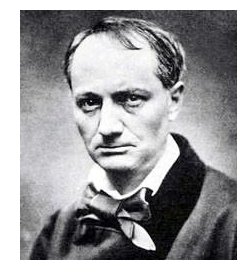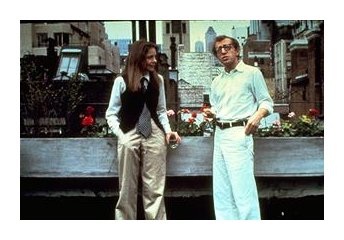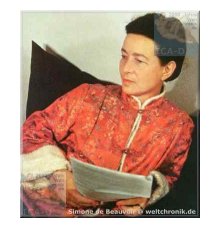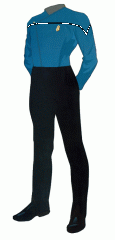Thank You, Readers, for Of Two Mind's 50 Million Page Views
Garsh, 50 million page views.
Some time in the past day or two, Of Two Mind's page view count topped 50 million. The main site's server has logged 44,650,300 page views since the blog launched in May 2005, and the mirror site (charleshughsmith) has logged 5,391,515 page views since its inception on April 17, 2007.
In terms of global web traffic, 50 million page views is small potatoes, a mere blip. But nonetheless, it is still a big number for a tiny alternative-media site with a bunch of crazy content.
Thank you, readers, contributors and correspondents, for including this tiny outpost on the web in your daily data sweep. Occasionally a reader will ask what the Of Two Minds refers to, and my answer is my mind and your mind, as the inspiration and much of the content of the site comes from readers. My job, such as it is, is basically to curate the ideas and on-the-ground intelligence of the site's global readership.
Of Two Mind's financial supporters (who subscribe to the weekly Musings Reports for $50/year or $5/month) enable me to do this work. Thank you, contributors, for I know there are hundreds of other sites you could support with your hard-earned money.
I would also like to thank the many other publishers who republish or link to my work: Mish Shedlock, Zero Hedge, PeakProsperity.com, David Stockman's Contra Corner, Max Keiser, Washington's Blog, Macro Analytics, Dangerous Minds, Financial Sense, Seeking Alpha, TalkMarkets, Investing.com and many others.
Given the much larger audiences of many of these sites, I reckon the total page views of this site's content in the past decade is probably between 150 and 200 million.
I have been very fortunate to be a regular guest on podcasts and video series hosted by Gordon T. Long of Macro Analytics, Chris Martenson of Peak Prosperity, Drew Sample of The Sample Hour, Kerry Lutz of Financial Survival Network, Mike Swanson of Wall Street Window.com and many others, including Max and Stacy of Max Keiser.com.
I would like to say that the site is headquartered in some grand place: a Swiss villa, penthouse in New York, private compound in old Kyoto, beachfront estate in Hawaii, etc., but the reality is rather more prosaic: here is a photo of the Of Two Mind World HQ:

Yes, a cardboard box, about as far from grandiose as you can get. Frankly, just about any cardboard box will do, because the World HQ doesn't hold much: a processor, a dumb mobile phone for the rare occasions it comes in handy and two notebooks for analog notes.

It is a barebones (threadbare) operation here, a one-man shop that's only open as real-world life and duties permit. That probably defines much of the alternative media. The big bucks in our economy flow elsewhere.
I greatly appreciate your tolerance of the site's occasional outbursts of goofy humor. From tragedy comes humor, right?
so, onward to a more sustainable and authentic way of living.
Just for laughs, I'm reprinting the blog's first post on May 5, 2005: for what it's worth:
If Only Writers Had Uniforms
Writers don't get no--oops, make that any--respect, and it's easy to see why. It's not difficult or dirty or adventurous work, and no fearlessness (except, perhaps, of rejection) is required. Anyone can do it, and judging by the limitless blogs, webpages and online conversations shuttling over the Web, everyone does.
 The skills involved are not clear, despite all those years of high school and college English courses;
open the latest Atlantic magazine and you'll find some utterly pedestrian prose praised to the
stratosphere. Praise for the few is outsized, bordering on godhood (i.e.
Nabokov and Baudelaire, shown right), while the vast
majority labor in sunless obscurity. Even more damning, a great many non-professional writers are very
good: succinct and funny, with an identifiable voice.
The skills involved are not clear, despite all those years of high school and college English courses;
open the latest Atlantic magazine and you'll find some utterly pedestrian prose praised to the
stratosphere. Praise for the few is outsized, bordering on godhood (i.e.
Nabokov and Baudelaire, shown right), while the vast
majority labor in sunless obscurity. Even more damning, a great many non-professional writers are very
good: succinct and funny, with an identifiable voice.
Imagine if the same could be said of attorneys; in that wonderful world, any of the other folks on your Yahoo message board could take your case to court with a near-professional confidence.
Is it any wonder writers get zero respect?
The pay is similarly imbalanced, with the golden few earning sums usually reserved for those sitting on vast pools of petroleum, while the remuneration for the typical scribbler is abysmal, laughable or even, if some "creativity" is allowed, truly pathetic.
Even worse, time has an insidious way of undermining what was categorically taken as "great" and revealing it as mediocre (Who won the Nobel Prize for Literature in 1919?); or alternatively, by taking what was dismissed as rubbish (Moby-Dick, anyone?) and elevating it to unabashed greatness. (This of course usually occurs after the writer's demise.)
 So what is to be done? (Arrgh, Lenin again!)
So what is to be done? (Arrgh, Lenin again!)
If only writers had uniforms.
My, how our breasts would swell with pride! Why, we might even venture out in public without that cowering look of the oft-rejected.
But what should a writer's uniform look like?
History offers a rich trove of possibilities. For the slightly morbid careworn dandy look (easily feminized, as you can tell by the foppy bow), who better than Baudelaire?
In a more classic vein, consider Mark Twain's natty all-white outfit--also easily feminized (picture Annie Hall with a white vest and matching linen jacket).
In this publicity still from the film
Annie Hall (originally titled "Anhedonia," if sources
are to be believed), we note that Woody Allen, as befits a talented megabucks writer/director, is sporting
the 1977 version of timeless white. Another fan of the look is
Tom Wolfe.

Any number of female writers also offer a stylistic model for a writerly uniform befitting either the female or male form. Consider the Chinese-inspired look of Simone de Beauvoir in the accompanying photo (credit: Weltchronik.de).
But for my money, the only uniform flexible enough to clothe the vast range of writers is the unisex proto-futurist
attire of Star Fleet Command. We are, after all, looking desperately to the future (and if
not the future per se, then to a royalty check or handsome-paying gig just ahead), and the easily
laundered, clean lines of the Star Fleet look should appeal to even the most fashion-averse amoungst us.
Conversely, the Fashionistas will find ample expression in accessorizing the uniform (imagine what red
open-toed sandals would do for it on a languid summer evening!)

There will be those in such a famously individualistic trade who will reject a uniform as somehow authoritarian; but these rebellious souls will still be free to maintain their scruffy non-conformist look (thereby confirming their conformity, albeit to a parallel form), including the tattered bathrobe and crushed velour slippers which are the de riguer uniform of the dejected L.A. screenwriter. You know the one, sitting on a broken sofa in a dingy North Hollywood studio, pondering why his landlord calls so often and his agent so rarely. A uniform would sluice some pep right back into his step, for it would say one proud thing: despite the odds, the rejections and the poverty, I am still a writer.
There is another enormous advantage to the StarFleet look: the implicit hierarchy of Fleet
uniforms. Even the most ardently egalitarian in our motley trade secretly or openly desires recognition
as a damned fine writer; and if not that, then at least some standing within the exasperating horde.

It's easy to conjure up a Fleet-like array of epaulets and insignias which would subtly confer rank. A single ribbon might denote a journalism degree, while two would signify employment, with a small oak-leaf cluster for each decade of service in the newsroom. Service in the field could be recognized by a series of battle ribbons (red and white for 'Nam, blue and white for the Balkans, etc.)
A series of crisply designed silver insignias could denote a writer's specialty: I for investigative, T for technical writing, SD for script doctor, PW for playwright, E for editor, M for marketing, BS for business-speak (a truly unfortunate set of initials, but somehow appropriate for slingers of jargon like "right-sizing"), and so on.
A stylized lance insignia would confer the unenviable status of free-lancer, with epaulets awarded for the milestones of publication in a major media outlet or a $1,000 fee. Book contracts could be signified with artful pins, silver for non-fiction and gold for fiction. Sales above 5,000 would earn the writer a silver cluster while sales above 20,000 would earn a gold. For sales above 100,000 and a sale of film rights--who needs a lousy uniform once you've reached that Olympus?
NOTE: Contributions/subscriptions are acknowledged in the order received. Your name and email remain confidential and will not be given to any other individual, company or agency.
|
Thank you, Susan V. ($20), for your delightfully generous contribution to this site-- I am greatly honored by your steadfast support and readership. |